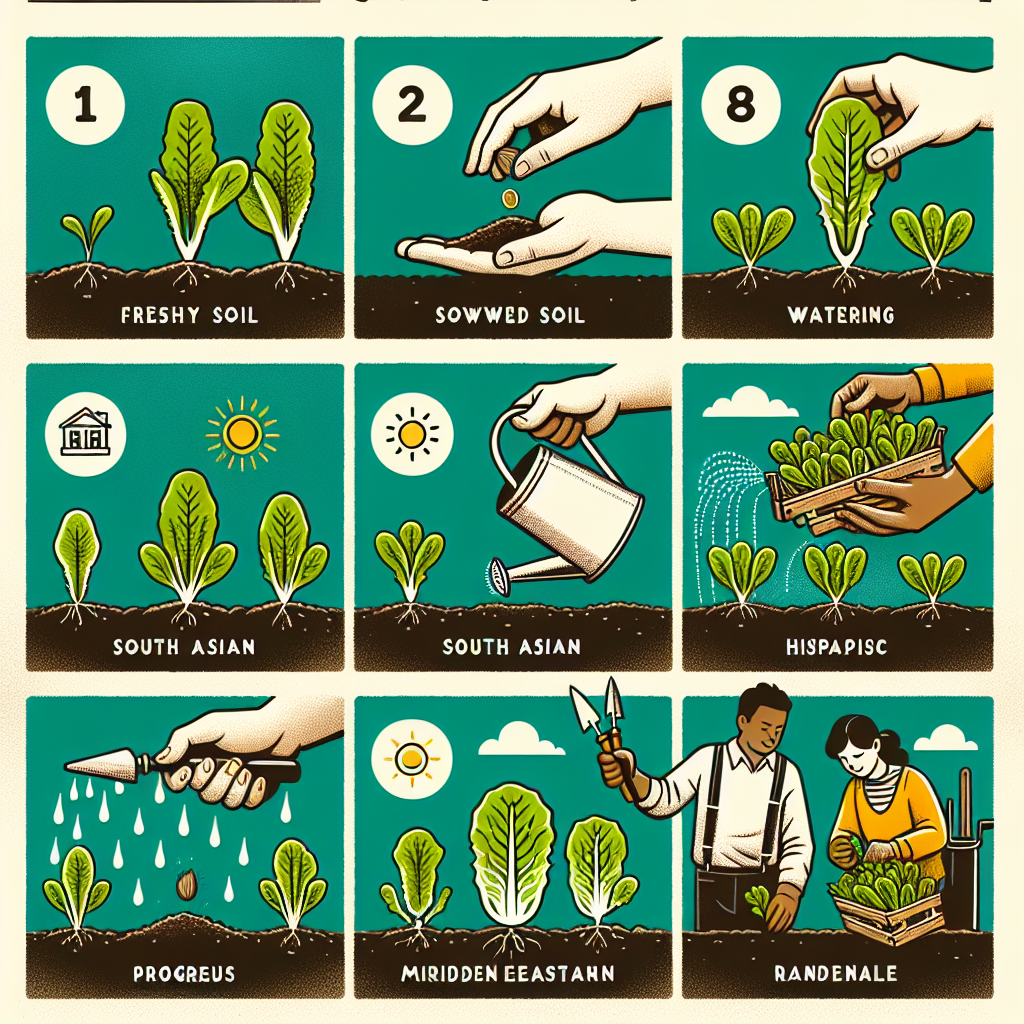
How to grow romaine lettuce
How to Successfully Grow Romaine Lettuce: A Comprehensive Guide
Growing your own vegetables can be a rewarding experience, and among the easiest greens to cultivate is romaine lettuce. This crisp, nutrient-rich salad staple is perfect for home gardeners, whether you're seasoned or just starting out. In this guide, you will discover detailed steps and essential tips on how to grow romaine lettuce, from seed to harvest.
Understanding Romaine Lettuce
Romaine lettuce (Lactuca sativa var. longifolia) is characterized by its long, upright leaves and firm ribs. This leafy green is not only delicious in salads but also packed with vitamins A, C, K, and folate. It thrives in cooler temperatures and can be grown in various climates, making it a great addition to any garden.
Preparing Your Garden Bed
Before sowing your romaine seeds, you’ll need to prepare your garden bed. Follow these steps for optimal soil health:
- Choose a sunny location with at least 6 hours of sunlight daily.
- Test your soil's pH—romaine prefers a pH between 6.0 and 7.0.
- Work in compost or well-rotted organic matter to enhance soil fertility.
- Ensure good drainage to prevent root rot and disease.
Sowing Seeds
Once your bed is prepared, you can begin planting. Here’s how to sow your romaine seeds:
- Wait until the soil temperature reaches around 50°F (10°C) to ensure optimal germination.
- Scatter seeds approximately ¼ inch deep in rows, spaced 12 inches apart.
- Lightly cover the seeds with soil and water gently.
It's usually best to sow seeds in spring or late summer for a fall harvest. If you're in a milder climate, you can grow romaine throughout the winter as well.
Caring for Romaine Lettuce
After sowing, your work isn’t over just yet! Romaine lettuce requires consistent care to thrive. Here are essential care tips:
- Watering: Keep the soil consistently moist but not soggy. Water early in the morning to reduce evaporation.
- Fertilization: Use a balanced fertilizer every 3-4 weeks to promote robust growth. Liquid fertilizers can be applied every two weeks.
- Pest Control: Regularly check for pests such as aphids and slugs. Organic pesticides or neem oil can be effective treatments.
- Weeding: Keep the garden bed free of weeds that compete for nutrients and water.
Harvesting Romaine Lettuce
Knowing when to harvest your romaine is key to enjoying crisp, delicious leaves. Here’s how to do it:
- Allow your romaine to grow for about 60 to 75 days after planting.
- Harvest when the leaves are firm and upright and are about 6 to 12 inches tall.
- To harvest, use a sharp knife to cut the lettuce at the base, leaving the roots in the ground for potential regrowth.
Storing Romaine Lettuce
Proper storage is essential for maintaining the freshness of your harvested romaine lettuce. Here are some tips:
- Rinse the leaves lightly to remove soil and debris.
- Pat them dry with a paper towel or salad spinner.
- Store in a breathable plastic bag in the crisper drawer of your refrigerator.
Common Challenges and Solutions
Like any garden endeavor, growing romaine lettuce comes with its own set of challenges. Below are common issues and their solutions:
| Challenge | Solution |
|---|---|
| Slow Growth | Ensure consistent watering and adequate sunlight. Consider using a balanced fertilizer. |
| Bitter Leaves | Excess heat can lead to bitterness. Plant during cooler temperatures or provide shade during hot weather. |
| Pests | Regularly inspect plants and use organic pest control methods if needed. |
| Leaf Yellowing | This could be due to overwatering or nutrient deficiency. Adjust watering habits and fertilize accordingly. |
Conclusion
Growing your own romaine lettuce is not only practical but also deeply satisfying. By understanding the right methods to prepare your garden, sow seeds, provide care, and overcome challenges, you will soon enjoy the fruits of your labor. Remember, the key to success lies in being observant and adapting your gardening practices as needed.
This incredibly versatile leafy green can be used in salads, wraps, and numerous dishes, enhancing your meals with a fresh crunch. So, gear up, get your seeds, and embark on this green journey to learn how to grow romaine lettuce in your own backyard!
By Guest, Published on October 18th, 2024